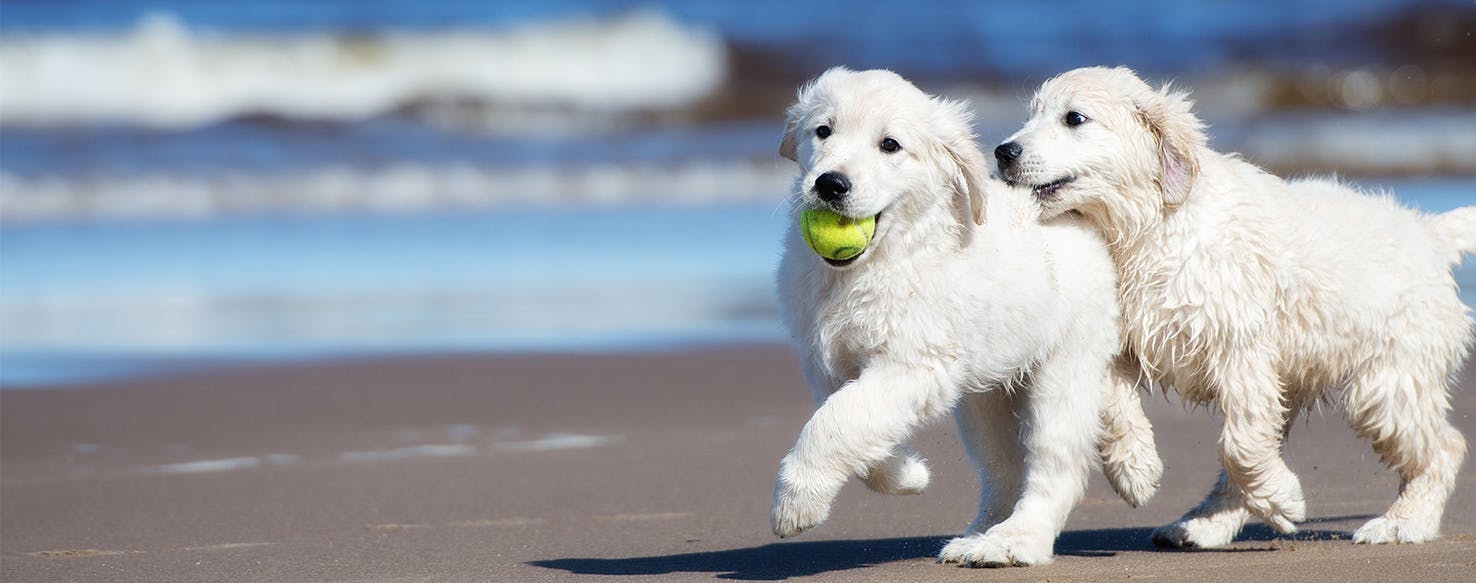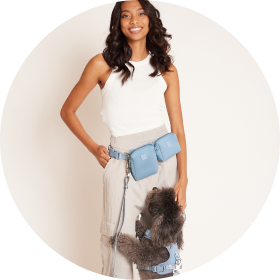- Home
- The Daily Wag!
- Senses
- Can Dogs Understand Gestures?

Dogs can't really understand what we're saying. Sure, they definitely get a few words here and there, like "sit", "no!", "good dog", "walk", "dinnertime", and their name (hopefully!). And while we all wish that they could understand more, owners out there may be surprised to learn that there's another way to communicate with our dogs without using our words.
Studies have shown that dogs can actually learn to understand gestures, and have evolved to be able to understand certain facial expressions and signal or indications that we humans use to express certain emotions or feelings.
So while we can't actually have a conversation with our dog or tell them exactly what we're feeling or what we want them to do, we can teach our dogs to understand gestures that get the same message across. This can help you to keep having a great, loving relationship with your pooch!
Since dogs have been around humans for so long, it's no wonder that they've learned what certain gestures and facial expressions mean. They can't communicate with us since they don't understand what we're saying, so they had to learn how their human is feeling through reading their facial expressions, body language, and voices.
Depending on what gesture you're making, your dog is going to react differently. For example, if you make an angry gesture, yell, or otherwise seem upset, your dog is going to act differently than they would have had you been happy - this is especially true if you're mad at them! If you're making angry gestures, you may notice that your dog shies away from you, avoids eye contact, and whimpers or cries.
If you make gestures in relation to you being sad, like perhaps crying, going for a tissue, or something like that, your dog is going to recognize and react to that as well. Dogs that understand their owner's sad gestures are going to act with empathy. Sometimes that can be offering up a cuddle, other times that can be crying with you. Regardless of the way your dog reacts to your sadness gestures, the fact that they react at all is proof that they do understand them.
If you make gestures to show that you're happy or excited, woofers are going to recognize and react to that as well. If you jump up and down, your dog may too. If you laugh loudly, your dog may give an excited yip or bark. All of these things basically mean that your dog is understanding the fact that you're excited or happy due to the gestures and facial expressions you're making, and they're reacting to that by being happy and excited themselves!
Dogs also notice things that we do, like pointing and turning our heads to focus on something. Dogs pay attention to us, so when we turn suddenly to look at something or point, they also turn and do the same! This shows that not only do they understand the gesture, i.e., why we turned our head, but they too want to know what we're looking at! Dogs that understand these types of gestures will act alert, probably with their ears forward in order to better hear or understand what we're looking at.
Body Language
Signs that your dog is understanding your gestures include:
- Alert
- Barking
- Raise Ears
- Whimpering
- Averting Eyes
- Ears Up
Other Signs
<p>More cues that your dog is watching your gestures are:</p>
- Empathetic Behaviors
- Staring Where You Are
- Following The Direction Of Your Pointing
- Whimpering Or Crying With Us
- Avoiding Eye Contact When You'Re Mad At Them
- Cuddling With You When You'Re Upset
Dogs were domesticated by humans from wolves over 38,000 years ago! As a result, it's no wonder they haven't picked up on some of our gestures and habits and learned from them. Dogs really do note our facial expressions and behaviors, and once they begin to associate certain ones with certain emotions or actions, they react accordingly.
This means that history and evolution have truly created man's best friend, since they really can note and respond to how we're feeling or acting!
Numerous studies have shown that dogs actually have the intellectual capabilities of small kiddos, around 2 years old. "Dogs possess a 2-year old child's ability to understand human pointing gestures, with dogs requiring next to zero learning time to figure out the visual communication." Even chimps weren't able to understand pointing the way our woofers can!
A similar study showed that dogs were able to also understand "human visual signals, including head-turning and gazing." The one things dogs didn't get during the study was when "the experimenter's index finger pointed in a different direction from the protruding arm." So, while our dogs can't tell us that they understand what our gestures mean, the fact that they react to them accordingly means that they do at least understand, and sometimes, are even trying to help!
While our dogs already understand many of our gestures, there's definitely things we can do to make them understand more. For example, if you're trying to teach your dog a trick by using a gesture instead of a command, know that repetition and practice make perfect. While you may have to start out with both a verbal command and a gesture, by slowly removing the verbal command from the equation, your dog is still likely to associate the gesture with the trick.
Additionally, because dogs get confused by pointing in a different direction from the way your arm is raised, it's important that if we want our dogs to understand what we're pointing at, we keep our hands still and our bodies facing that direction as well.
Have questions or concerns about your pet?
Chat with a veterinary professional in the Wag! app 24/7.
Get Vet ChatWritten by Katherine McCormick
Veterinary reviewed by:
Published: 04/20/2018, edited: 04/06/2020
More articles by Katherine McCormick
